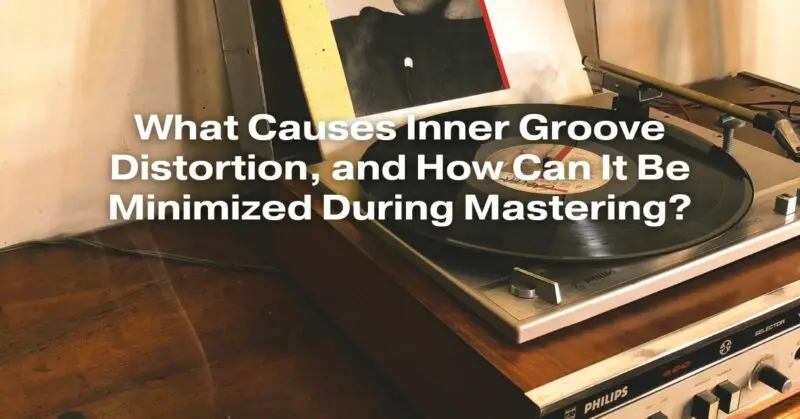Vinyl records have experienced a resurgence in recent years, appealing to both audiophiles and music enthusiasts for their warm, authentic sound. However, vinyl production comes with its challenges, one of them being inner groove distortion (IGD). This phenomenon occurs towards the center of the record, where the grooves are tightly packed, leading to a decline in audio quality. In this article, we will explore the causes of inner groove distortion and delve into effective mastering techniques to minimize this issue, ensuring a superior listening experience for vinyl enthusiasts.
Causes of Inner Groove Distortion
- Physical Limitations: Vinyl records are limited by the laws of physics. As the groove spirals inward, the linear velocity decreases. This reduction in speed affects the high-frequency content, causing distortion and loss of clarity.
- Groove Spacing: Groove spacing is tighter in the innermost part of the record. This increased packing of information makes it challenging for the stylus to accurately track the grooves, leading to distortion.
- Anti-Skating Issues: Anti-skating mechanisms in turntables are essential to balance the forces on the stylus. If not correctly set, the stylus might exert too much pressure on one groove wall, causing distortion.
- High-Frequency Loss: Due to the physical limitations of vinyl, high-frequency sounds are the first to be compromised in the inner grooves. This loss can result in a muffled or distorted sound.
Strategies for Minimizing Inner Groove Distortion During Mastering
- Careful Equalization: During mastering, audio engineers can apply careful equalization to balance the frequency spectrum. By adjusting the levels of high frequencies, engineers can compensate for the natural loss that occurs towards the inner grooves.
- Dynamic Range Compression: Proper use of dynamic range compression can help maintain a consistent level throughout the track. By controlling peaks and valleys in the audio waveform, engineers can ensure that the stylus doesn’t jump out of the groove, reducing distortion.
- Optimized Track Order: Placing tracks with high-energy, bass-heavy content towards the outer grooves and tracks with softer, acoustic elements towards the inner grooves can mitigate distortion. This strategic arrangement optimizes the use of space on the vinyl, reducing inner groove distortion for critical tracks.
- Wider Groove Spacing: Though it might reduce the overall playtime of the vinyl, widening the groove spacing in the inner tracks can significantly improve tracking. This spacing provides more room for the stylus to accurately reproduce the audio, minimizing distortion.
- Proper Anti-Skating Adjustment: Ensuring that the turntable’s anti-skating mechanism is correctly adjusted is crucial. This adjustment counteracts the lateral force pulling the stylus towards the center, preventing excessive pressure on one groove wall and reducing distortion.
- High-Quality Mastering Equipment: Investing in high-quality mastering equipment, including precision cutting lathes and styli, ensures a more accurate representation of the audio signal on the vinyl. This, in turn, reduces the likelihood of inner groove distortion.
Conclusion
Inner groove distortion is an inherent challenge in vinyl production, rooted in the physical limitations of the medium. However, through meticulous mastering techniques and a deep understanding of these limitations, audio engineers can significantly minimize this issue. By carefully equalizing the tracks, optimizing their order, adjusting groove spacing, and ensuring proper equipment calibration, the listening experience of vinyl enthusiasts can be greatly enhanced. As the demand for vinyl continues to rise, mastering engineers play a vital role in preserving the integrity of the music and delivering a high-quality product to audiophiles around the world.


